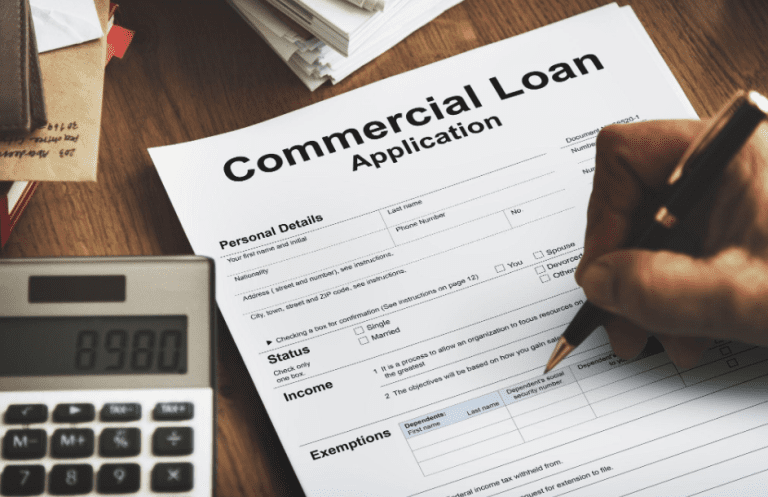Debt Service Coverage Ratio (DSCR): A Complete Guide
The Debt Service Coverage Ratio (DSCR) is one of the most important financial metrics used in lending, particularly when it comes to commercial real estate, corporate loans, and business financing. DSCR helps lenders determine whether a borrower has enough income to cover their debt payments. For investors, developers, and businesses seeking loans, understanding how DSCR works can be the key to securing financing and improving the overall financial health of an investment.
This comprehensive guide will break down everything you need to know about DSCR, including how it is calculated, why it matters to lenders, and how you can improve your DSCR to increase your chances of obtaining favorable loan terms.
What is Debt Service Coverage Ratio (DSCR)?
The Debt Service Coverage Ratio (DSCR) is a financial ratio that measures the relationship between a property or business’s net operating income (NOI) and its total debt service (which includes both principal and interest payments). In simple terms, DSCR evaluates whether a business or investment generates enough cash flow to cover its debt obligations.
Why is DSCR Important?
DSCR is critical for both borrowers and lenders because it provides a clear indicator of a borrower’s ability to repay a loan. Lenders use DSCR to assess risk, determine loan eligibility, and set loan terms. For borrowers, having a strong DSCR can lead to better loan terms, including lower interest rates and larger loan amounts.
Here are several reasons why DSCR matters:
1. Lender’s Risk Assessment
Lenders use DSCR as a key metric to evaluate risk. A DSCR greater than 1.0 indicates that the borrower generates enough income to cover their debt payments. The higher the DSCR, the less risk the lender faces. On the other hand, a DSCR below 1.0 suggests that the borrower does not generate enough income to meet their debt obligations, making the loan much riskier.
2. Loan Qualification
Most lenders have minimum DSCR requirements for loan approval. For example, commercial real estate loans may require a minimum DSCR of 1.25 or higher, meaning the borrower must generate 25% more income than the required debt payments. Borrowers with DSCRs below this threshold may have difficulty securing financing or may be offered less favorable loan terms.
3. Determining Loan Size
DSCR helps determine how much a borrower can afford to borrow. A high DSCR allows borrowers to take on more debt because lenders are confident that the borrower can cover their payments. For example, a business with a DSCR of 2.0 is generating twice the income needed to cover its debt, which may qualify it for a larger loan.
4. Loan Terms and Interest Rates
Lenders often offer more favorable loan terms, such as lower interest rates and extended repayment periods, to borrowers with high DSCRs. This is because borrowers with higher DSCRs are seen as less risky, making them more likely to repay the loan on time and in full.
5. Investment Performance Evaluation
For real estate investors, DSCR is an important tool for evaluating the performance of income-producing properties. A high DSCR indicates that the property generates enough income to cover operating costs and debt payments, while a low DSCR suggests that the property may not be financially sustainable without additional capital.
Ideal DSCR for Different Loan Types
The acceptable DSCR varies depending on the type of loan, the lender, and the borrower’s financial profile. Here’s a general guideline of DSCR requirements for different types of loans:
1. Commercial Real Estate Loans
Lenders typically require a DSCR of 1.25 or higher for commercial real estate loans. This means the property or business should generate at least 25% more income than the debt service payments. A DSCR of 1.25 or higher provides a buffer for lenders in case of fluctuations in income or unexpected expenses.
2. Small Business Loans
For small business loans, lenders usually look for a DSCR of at least 1.15 to 1.25. A DSCR in this range indicates that the business generates slightly more income than necessary to cover debt obligations, reducing the risk for lenders.
3. Residential Real Estate Loans
While residential mortgages typically focus more on a borrower’s credit score and income-to-debt ratio, DSCR still plays a role in investment property loans. Investors buying rental properties often need a DSCR of 1.2 to 1.5, depending on the lender.
4. Corporate Loans
For large corporate loans, lenders may require a DSCR of 1.5 or higher. This higher threshold reflects the complexity and risk involved in corporate lending, particularly for companies with fluctuating cash flow or large debt burdens.
Factors That Impact DSCR
Several factors can influence a borrower’s DSCR, and understanding these factors is key to improving this critical financial metric:
1. Net Operating Income (NOI)
NOI is a major component of DSCR, and it can be affected by several variables, including rental income, operating expenses, and vacancy rates. Increasing NOI—either by raising revenue or cutting expenses—can directly improve DSCR.
- Increasing Revenue: Raising rent or diversifying income streams can boost NOI and improve DSCR. For businesses, this might mean increasing sales or finding new revenue opportunities.
- Reducing Expenses: Lowering operating expenses, such as property management fees, maintenance costs, or utility bills, can help increase NOI.
2. Debt Service (Loan Payments)
Debt service is the total amount of loan payments due, and lowering these payments can improve DSCR. This can be achieved by refinancing existing loans to secure a lower interest rate or extending the loan term to reduce monthly payments.
- Refinancing: Refinancing to a lower interest rate can significantly reduce debt service, improving DSCR.
- Paying Down Debt: Making extra payments toward the principal balance can reduce the overall debt, lowering debt service payments.
3. Vacancy Rates
For real estate investors, vacancy rates directly impact NOI. Higher vacancy rates reduce rental income, which in turn lowers NOI and DSCR. Keeping vacancy rates low is essential for maintaining a strong DSCR.
4. Interest Rates
Interest rates affect the size of debt service payments. When interest rates rise, debt payments increase, lowering DSCR. Conversely, lower interest rates reduce debt service and improve DSCR.
How to Improve Your DSCR
If your DSCR is below the required threshold to qualify for a loan, or if you want to secure better loan terms, there are several strategies you can use to improve it:
1. Increase Revenue
For real estate investors, increasing rental income is one of the most effective ways to improve DSCR. This could involve raising rents, leasing additional units, or adding value to the property to justify higher rental rates. For businesses, increasing sales or diversifying revenue streams can help improve NOI.
2. Reduce Operating Expenses
Cutting unnecessary expenses can boost NOI and improve DSCR. This could mean negotiating better terms with vendors, reducing energy costs, or optimizing operational efficiencies.
3. Refinance Existing Loans
Refinancing existing loans at a lower interest rate or extending the loan term can reduce debt service payments, improving DSCR. For example, if your current loan has a high interest rate, refinancing to a lower rate can free up cash flow.
4. Pay Down Debt
Making extra payments toward the principal can reduce the total debt burden, lowering debt service and improving DSCR. This strategy works best if the borrower has sufficient liquidity to make extra payments without negatively impacting operations.
5. Lengthen the Loan Term
Extending the loan term can reduce monthly debt payments, which will improve DSCR. While this may increase the overall interest paid over the life of the loan, it can provide short-term cash flow relief.
Conclusion
The Debt Service Coverage Ratio (DSCR) is a vital financial metric used by lenders to assess a borrower’s ability to repay debt. A healthy DSCR not only increases your chances of securing financing but also opens the door to better loan terms, such as lower interest rates and higher loan amounts. For real estate investors, business owners, and corporations, maintaining a strong DSCR is essential for long-term financial stability and growth.
By understanding how DSCR is calculated and what factors influence it, borrowers can take proactive steps to improve their DSCR and position themselves for success when seeking financing. Whether you’re looking to refinance, expand your portfolio, or secure a new loan, having a solid DSCR will ensure that you’re in a strong financial position to meet your debt obligations and achieve your financial goals.



